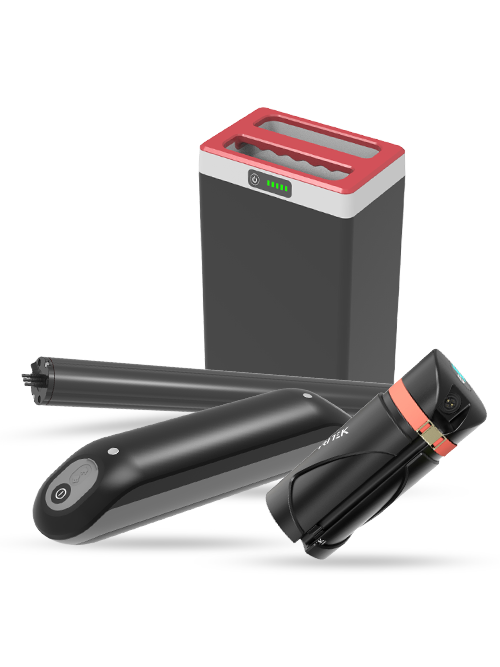Discover the significance of CAN UDS in modern vehicles.
What is CAN UDS in Lithium Batteries?
CAN UDS, or Controller Area Network Unified Diagnostic Services, is the communication protocol that facilitates real-time interaction between lithium batteries and other components in electric vehicles. It acts as the essential language through which the battery reports its status, issues, and data to ensure seamless coordination and problem detection, making it the backbone of efficient electric mobility.
What is the UDS Protocol?
First things first, what exactly is the UDS Protocol? Well, think of it as the universal language of your vehicle’s brain. It’s the lingo that Electronic Control Units (ECUs) use to communicate and, most importantly, to diagnose their own health. But that’s just the tip of the iceberg.
So, why the need for this deep dive into UDS, you ask?
Why Do You Need CAN UDS in Lithium Batteries?
CAN UDS is a necessity because it enables real-time problem detection and efficient communication between your lithium battery and the various components in your electric vehicle. It’s the guardian that prevents your electric ride from going haywire, ensuring a smooth, trouble-free journey.
Purpose of UDS Protocol
The primary purpose of the UDS Protocol is standardization.
The UDS Protocol steps in as the universal translator, ensuring that every ECU, regardless of its origin or manufacturer, speaks the same diagnostic language.
Why is standardization crucial? It’s because modern vehicles are no longer confined to a single brand’s exclusive ECUs.
The “Unified” in UDS signifies that it’s a universal standard, not tied to any particular company. It means that the services and functionalities it offers are the same for all ECU manufacturers (OEMs).
The “Diagnostics” aspect indicates that UDS is not just about communication but about identifying and rectifying any faults or “illnesses” in your vehicle. It serves as the diagnostic tool that keeps in top form, much like a doctor diagnosing and treating a patient.
The Role of Diagnostics
Now, the real magic lies in the way this communication happens. Your vehicle employs a special tool that acts as a translator, facilitating the conversation. This tool connects to the control units and extracts the fault code, just like a doctor diagnosing an ailment.
This communication can occur through various methods, such as through the Controller Area Network (CAN), Local Interconnect Network (LIN), or K-line methods. Each of these methods corresponds to a different way of initiating the dialogue between your vehicle and its control units.
The UDS Protocol, as the language of this communication, ensures that these dialogues are effective, accurate, and comprehensive. It’s the thread that weaves together the complex web of technology, making sure that when something isn’t right with your vehicle, it can be promptly diagnosed and addressed.
In essence, the UDS Protocol bridges the gap between the vast array of control units in modern vehicles and the tools used to diagnose and maintain them. It’s the communication conduit that ensures your vehicle stays in tip-top shape, even in the face of complexity.
Difference between Communication Protocol and Diagnostic Protocol
Understanding the difference between a communication protocol and a diagnostic protocol is essential to grasp the unique role of the Unified Diagnostic Services (UDS) Protocol in the vehicle world.
Communication Protocol: This is the language of data exchange, enabling devices to communicate effectively. It establishes the rules and conventions for seamless data transfer in systems, both within vehicles and in computer networks.
Diagnostic Protocol: Unlike a communication protocol, a diagnostic protocol is focused on identifying and addressing faults or issues within a system. In the vehicle context, it’s the tool that diagnoses when something isn’t working correctly.
Advantages of CAN UDS
Let’s get right to it. Here are the clear advantages of having CAN UDS in lithium batteries:
- Real-Time Issue Detection: CAN UDS monitors your battery in real-time, swiftly identifying and addressing problems.
- Enhanced Energy Efficiency: It optimizes battery performance, giving you more mileage on a single charge.
- Reduced Breakdowns: With its vigilant monitoring, CAN UDS helps prevent breakdowns, ensuring a smooth ride.
- Precise Diagnostics: It not only detects issues but also provides detailed information about what’s wrong.
- Effortless Troubleshooting: Armed with diagnostic data, troubleshooting becomes a breeze, making maintenance a walk in the park.
In short, CAN UDS is your battery’s best friend, guaranteeing a trouble-free and efficient electric ride.
Disadvantages of CAN UDS
Now, let’s talk about the flip side – the disadvantages of relying on CAN UDS in lithium batteries. Every superhero has a weakness, and so does CAN UDS.
1. Data Intensive: CAN UDS is a chatterbox. It’s constantly communicating, which can put a strain on the battery’s resources. This chatty nature can affect your battery’s overall efficiency.
2. Complexity: CAN UDS isn’t a plug-and-play solution. Understanding and interpreting the data it provides requires specialized knowledge and equipment. You might need experts to handle the technicalities.
CAN UDS vs. Other Communication Types
Each communication type has its strengths, and the choice depends on your specific needs in the electric vehicle realm.
| Communication Type | CAN UDS | CAN Open | UART | CAN | RS485 |
|---|---|---|---|---|---|
| Real-Time Monitoring | Yes | Limited | No | Yes | Yes |
| Advanced Diagnostics | Yes | No | No | Limited | Limited |
| Data Precision | High | Moderate | Low | Moderate | Moderate |
| Efficient Data Transfer | Yes | Yes | No | Yes | Yes |
| Complexity | Moderate | Moderate | Low | Moderate | Moderate |
Final Thoughts
In the world of modern vehicles, CAN UDS Protocol is the unsung hero. It standardizes vehicle diagnostics, ensuring ECUs understand the same commands, regardless of their origin.



